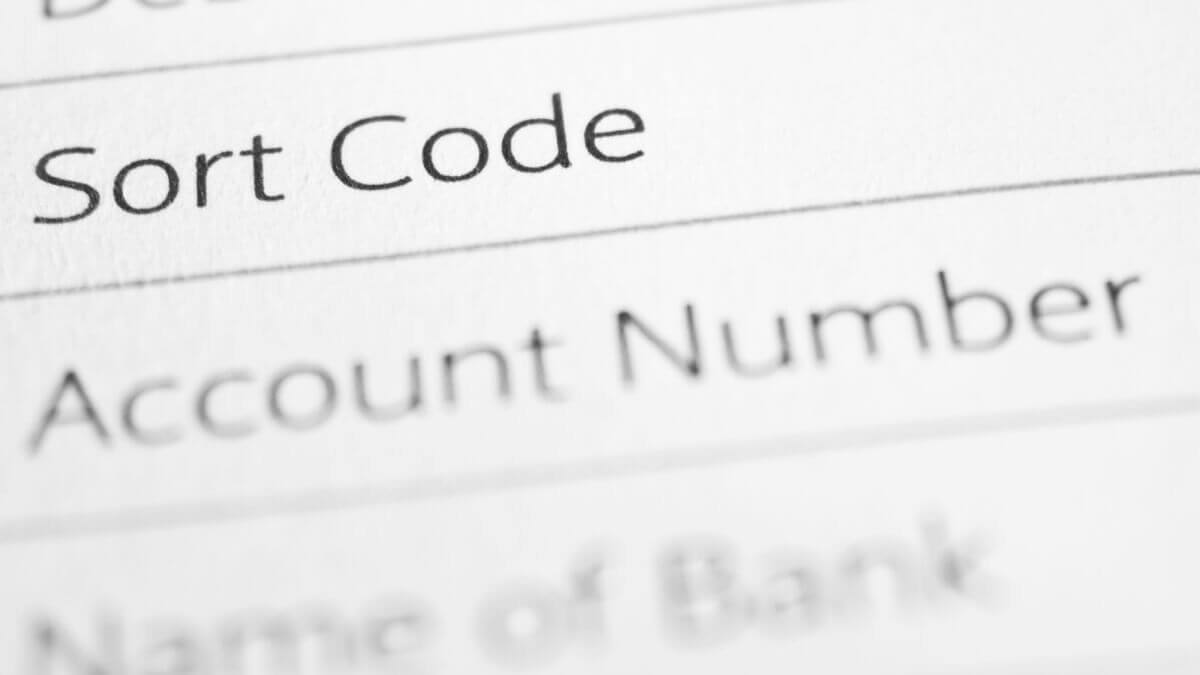GlobalWebPay Alternative
GlobalWebPay is not as expensive as traditional banks out there however, for some transfers, Wise might be able to save you more money.

If you’re opening a UK bank account for the first time, there are a few key terms you need to know about.
One of the most important is the sort code. This either doesn’t exist in other countries, or is called something different. It’s only really used by British and Irish banks.
So what is a sort code, what does it look like, and how do you find yours? We’ll answer all these questions and more here in this handy guide.
Remember that a bank isn’t the only way to manage your money in the UK. Open a Wise multi-currency account, and you can send and receive international transfers. You also get access to local account details in 10 countries, including the UK.
Please see the Terms of Use for your region or visit Wise fees & pricing for the most up-to-date information on pricing and fees.
A sort code is a 6-digit number which is used to identify your specific bank and local branch. Sort codes ensure that banks and financial institutions can identify where a payment is being sent to, or where a transfer has come from.
All UK bank accounts have a sort code, along with an account number.
Sort codes are 6 digits long, but are usually split into pairs when written down. For example, 12-34-56.
The first two digits refer to the bank, while the last four identify the specific branch. This is usually the local branch where you opened the account.¹
If you want to make or receive a UK payment where a bank is involved, you’ll usually need a sort code.
For example, you’ll need to give your sort code along with your account number to a person or company wanting to send a payment to your bank account.
Similarly, if you’re sending money to someone else, you’ll need their sort code along with other bank account details.
You should always exercise caution when handing over your bank details, especially to people you don’t know.
However, it is generally considered safe to give out your sort code and account number. This is because these details can only be used to deposit money in your bank account. They can’t be used to access your account or take any funds out of it.²
There are a few different ways you can find the sort code for your bank account, including:
While it can differ from bank to bank, you’ll often find your sort code and account number on the back of your debit or credit card.
To access your sort code on your bank’s website, you’ll first need to make sure that you’re registered for online banking.
All signed up and have your login details to hand? You can simply log in and click on your account to view the account number and sort code.
If you’re sending a payment to someone else, you can also use a sort code checker tool to make sure you have the right details for them.
If you still use cheque books, you’ll usually find your sort code printed there.
Other types of bank correspondence may also feature your sort code. For example, a letter confirming the opening of a new account or an annual statement of interest.
A sort code is only used in the UK and Ireland for domestic transfers.
SWIFT and BIC codes are used for international transfers. They refer to the same thing, as SWIFT (Society for Worldwide Interbank Financial Telecommunication) is a type of BIC (Bank Identifier Code).
SWIFT/BIC codes are used to identify a particular bank, including its location, country and branch. This information is crucial for ensuring that international payments arrive at the right destination.
There’s also another code to know about - the IBAN. This stands for International Bank Account Number. It’s also used for international transfers, but is used to identify a specific account rather than the details of the bank.
After reading this guide, you should be all clued up on what a sort code is. We’ve covered why the sort code is important, what it looks like and a few easy ways to track yours down.
Sources used:
Sources last checked on date: 17-Nov-2022
*Please see terms of use and product availability for your region or visit Wise fees and pricing for the most up to date pricing and fee information.
This publication is provided for general information purposes and does not constitute legal, tax or other professional advice from Wise Payments Limited or its subsidiaries and its affiliates, and it is not intended as a substitute for obtaining advice from a financial advisor or any other professional.
We make no representations, warranties or guarantees, whether expressed or implied, that the content in the publication is accurate, complete or up to date.

GlobalWebPay is not as expensive as traditional banks out there however, for some transfers, Wise might be able to save you more money.

The weakest currency in the world might not be the one you think it is. Discover the 10 weakest global currencies and our guide to each of them.

The strongest currency in the world might not be what you think it is. We've compiled data on the top 25 global currencies with guides to each.

If you bank with Chase UK®¹ and you’re worried about the security of your payment card, you’ll be looking for quick and convenient ways to cancel a Chase card...

If you’re planning a holiday or business trip, you’ll need to work out the cost of spending in a different currency. Many people these days choose to spend on...

Looking for Christmas savings tips? You’re in the right place. As the costs of living increase, and rising interest rates push up mortgage repayments for many...